A Cover Story: Music Educators Journal and Historical-Political Narrativity
Abstract
:1. Introduction
1.1. Historical-Political Narrativity
1.2. Previous Analyses of Periodical Cover Content
2. Materials and Methods
3. Findings
3.1. One Hundred and Two Years of Cover Designs
3.2. Hypotheses
3.2.1. Imagery Related to Nationalism Increased During Times of Conflict
- February/March 1952—photo of the U.S. Capitol Building with fighter jets overhead and a military band below
- June/July 1959—photo of a young boy admiring a saxophonist in a military band
- October 1968—photo of a decorated trombonist in military band attire
- February 1975—graphic representation of a red, white and blue treble clef
- April 1979—still life photo of an American flag, a metronome, a judge’s gavel, and a carving of words including “tort”, “due process”, “malpractice”, “liability”, etc.
- February 1988—still life photo of an American flag, a trumpet, a chalk stave holder, black and white photos of military bands and flags in classrooms, etc.
- November 2001—photo of an American flag, with the words “O say, can you sing?”
- March 2015—photo of a military band in a parade
3.2.2. The Representation of People Diversified as Time Progressed
- First Man: October 1926 (George Oscar Bowen)
- First Woman: March 1927 (Mabelle Glenn)
- First Child: March 1938 (multiple children in a collage of performing ensembles)
- First Non-Caucasian: April 1945 (adult Huichol musician from Jalisco, Mexico)
- First Solo Musician: September/October 1945 (sepia rendering of a female trumpet player in military uniform)
- First Prominent Depiction of a Black Person: January 1967 (reproduction of James Chapin’s 1928 painting Ruby Green Singing, along with a full-page description of the painting)
- First Photo of a Black Person: December 1968 (group of boys from the Cathedral Choir of Men and Boys of the Washington National Cathedral in Washington, DC, USA)
- First Hispanic/Latino Children: January 1970 (two boys playing guitar and singing)
- First Asian Child: November 1979 (Chinese boy playing the pipa)
- First Asian Adult: April 1989 (female orchestra teacher)
- November 1979: Chinese boy playing the pipa
- April 1989: Female orchestra teacher and female cello player
- December 1989: Preschool girls playing violins
- January 1998: Sarah Chang, violin soloist with the New York Philharmonic
- January 2002: Female middle school violinist
- January 2004: Yo-Yo Ma, cellist
- June 2009: Female violist
3.3. Intentionality and the First Images of Black People
4. Conclusions and Future Directions
Acknowledgments
Conflicts of Interest
References
- Freer, P.K. ‘Let us give the light to them’: Bookending the first century of Music Educators Journal. J. Hist. Res. Music Educ. 2015, 36, 111–128. [Google Scholar] [CrossRef]
- Freer, P.K. The possible futures of MEJ. Music Educ. J. 2016, 102, 67–70. [Google Scholar] [CrossRef]
- Hancock, C.B.; Price, H.E.; Todd, E.D. Charting the headwaters of music education research: A bibliographic analysis of the sources referenced in the Journal of Research in Music Education from 1953 to 2015. Poster Presented at the Biennial Music Research and Teacher Education National Conference of the National Association for Music Education, Atlanta, GA, USA, 17–19 March 2016. [Google Scholar]
- Kratus, J. Identifying influential scholarship in music education. Presented at the Biennial Music Research and Teacher Education National Conference of the National Association for Music Education, Atlanta, GA, USA, 17–19 March 2016. [Google Scholar]
- Freer, P.K. From the Academic Editor: Music Supervisors’ Bulletin to MEJ: A “protective force” for music education (1914–1939). Music Educ. J. 2013, 100, 21–22. [Google Scholar] [CrossRef]
- Freer, P.K. MEJ covers from the first 100 years: Designing to unite a profession. Music Educ. J. 2014, 100, 39–45. [Google Scholar] [CrossRef]
- Cummings, R.C. A Subject Index to the Music Educators Journal 1939–1949. Master’s Thesis, University of Southern California, Los Angeles, CA, USA, 1949. [Google Scholar]
- Freer, P.K. From the Academic Editor: ‘Years of progress’—Music Educators Journal from 1964 to 1989 (volumes 51–75). Music Educ. J. 2014, 100, 18–19. [Google Scholar] [CrossRef]
- Hounchell, R.F. A Study of Creativity and Music Reading as Objectives of Music Education as Contained in Statements in the Music Educators Journal from 1914 to 1970. Ph.D. Thesis, Indiana University, Bloomington, IN, USA, 1985. [Google Scholar]
- Koza, J.E. The “missing male” and other gender issues in music education: Evidence from the Music Supervisors’ Journal, 1914–1924. J. Res. Music Educ. 1993, 41, 212–232. [Google Scholar] [CrossRef]
- Kruse, A.J.; Giebelhausen, R.; Shouldice, H.N.; Ramsey, A.L. Male and female photographic representation in 50 Years of Music Educators Journal. J. Res. Music Educ. 2015, 62, 485–500. [Google Scholar] [CrossRef]
- Reimer, B. Reflections on Music Educators Journal in its centennial year. Music Educ. J. 2014, 100, 27–32. [Google Scholar] [CrossRef]
- Volk, T.M. The history and development of multicultural music education as evidenced in the Music Educators Journal, 1967–1992. J. Res. Music Educ. 1993, 41, 137–155. [Google Scholar] [CrossRef]
- Hedgecoth, D. What history is teaching us: 100 years of advocacy in Music Educators Journal. Music Educ. J. 2014, 100, 54–58. [Google Scholar] [CrossRef]
- Heidingsfelder, L. The slogan of the century: Music for every child; every child for music. Music Educ. J. 2014, 100, 47–51. [Google Scholar] [CrossRef]
- McCarthy, M. “We who have the destiny of musical America in our hands” History speaks to us through 100 years of MEJ. Music Educ. J. 2014, 100, 29–38. [Google Scholar] [CrossRef]
- White, H. The question of narrative in contemporary historical theory. Hist. Theory 1984, 23, 1–33. [Google Scholar] [CrossRef]
- White, H. The Fiction of Narrative: Essays on History, Literature, and Theory, 1957–2007; Johns Hopkins University Press: Baltimore, MD, USA, 2010. [Google Scholar]
- Benedict, C. Policy, narrativity, and the representation of reality. Arts Educ. Policy Rev. 2009, 110, 22–26. [Google Scholar] [CrossRef]
- Stockley, N. Political Narratives: A Few Basics. Available online: http://neilstockley.blogspot.com/2011/05/political-narratives-few-basics.html (accessed on 18 March 2017).
- Freer, P.K. Parallel frames and policy narratives in music education and physical education. Arts Educ. Policy Rev. 2012, 113, 26–34. [Google Scholar] [CrossRef]
- Sliepcevich, E.M. RAPP: Content analysis of Health Education, 1984 and 1985. Health Educ. 1986, 17, 16–21. [Google Scholar] [PubMed]
- Coles, J.; Phillips, S.P.; Clearihan, L.; Feldman, K. Medical journal covers: An analysis of gendered images and how these might influence best practice. Aust. Fam. Phys. 2011, 40, 725–728. [Google Scholar]
- Bell, P. Content analysis of visual imagery. In Handbook of Visual Analysis; van Leeuwen, T., Jewitt, C., Eds.; SAGE Publishing: Thousand Oaks, CA, USA, 2001; pp. 10–34. [Google Scholar]
- Maslow, A. Depictions of Beauty on Cosmopolitan Magazine: Content Analysis of Covers (1959–2014). Master’s Thesis, University of Nevada, Las Vegas, NV, USA, 2015. [Google Scholar]
- Malkin, A.R.; Wornian, K.; Chrisler, J.C. Women and weight: Gendered messages on magazine covers. Sex Roles 1999, 40, 647–655. [Google Scholar] [CrossRef]
- Bazzini, D.G.; Pepper, A.; Swofford, R.; Cochran, K. How healthy are health magazines? A comparative content analysis of cover captions and images on Women’s and Men’s Health magazines. Sex Roles 2015, 72, 198–210. [Google Scholar]
- Dodd, D.K.; Foerch, B.J.; Anderson, H.T. Content analysis of women and racial minorities as news magazine cover persons. J. Soc. Behav. Personal. 1988, 44, 231–236. [Google Scholar]
- Covert, J.J.; Dixon, T.L. A changing view of representation and effects of the portrayal of women of color in mainstream women’s magazines. Commun. Res. 2008, 35, 232–256. [Google Scholar] [CrossRef]
- Plous, S.; Williams, T. Racial stereotypes from the days of American slavery: A continuing legacy. J. Appl. Soc. Psychol. 1995, 25, 795–817. [Google Scholar] [CrossRef]
- Beckman, J. Keeping the Holy Grail: The “mobility view” of the Danish automobile club FDM. In Social Change and Sustainable Transport; Black, W.R., Nijkamp, P., Eds.; Indiana University Press: Bloomington, IN, USA, 2002; pp. 101–106. [Google Scholar]
- Riessman, C.K. Narrative Methods for the Human Sciences; SAGE Publications: Thousand Oaks, CA, USA, 2008; pp. 141–182. [Google Scholar]
- Kress, G.; Theo van Leeuwen, T. Reading Images: The Grammar of Visual Design, 2nd ed.; Routledge: London, UK, 2006. [Google Scholar]
- White, H. The narrativization of real events. Crit. Inq. 1981, 7, 793–798. [Google Scholar] [CrossRef]
- White, H. The Content of the Form: Narrative Discourse and Historical Representation; Johns Hopkins University Press: Baltimore, MD, USA, 1987. [Google Scholar]
- Phelan, J.; Rabinowitz, P.J. Authors, Narrators, Narration. In Narrative Theory: Core Concepts and Critical Debates; Herman, D., Phelan, J.P.J., Richardson, B., Warhol, R., Eds.; The Ohio State University: Columbus, OH, USA, 2012; pp. 29–38. [Google Scholar]
- Delorenzo, L. Missing faces from the orchestra: An issue of social justice? Music Educ. J. 2012, 98, 39–46. [Google Scholar] [CrossRef]
- Wang, G. Interlopers in the realm of high culture: “Music moms” and the performance of Asian and Asian American identities. Am. Q. 2009, 61, 881–903. [Google Scholar] [CrossRef]
- Howe, S.W. Women Music Educators in the United States: A History; Scarecrow Press: Lanham, MD, USA, 2013. [Google Scholar]
- Kertz-Welzel, A.; Hebert, D.G. Patriotism and Nationalism in Music Education; Routledge: New York, NY, USA, 2016. [Google Scholar]
- Hebert, D.G. Militarism and music education. Music Educ. J. 2015, 101, 77–84. [Google Scholar] [CrossRef]
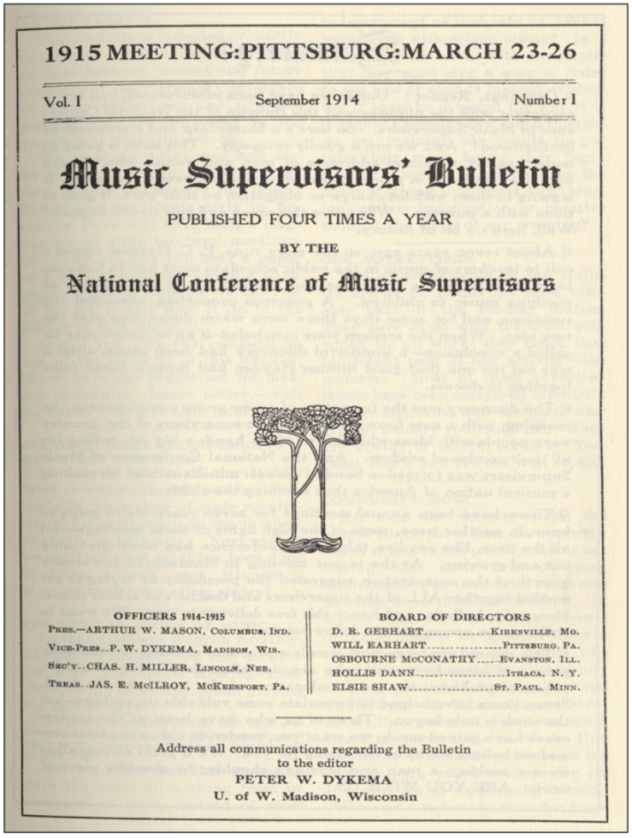
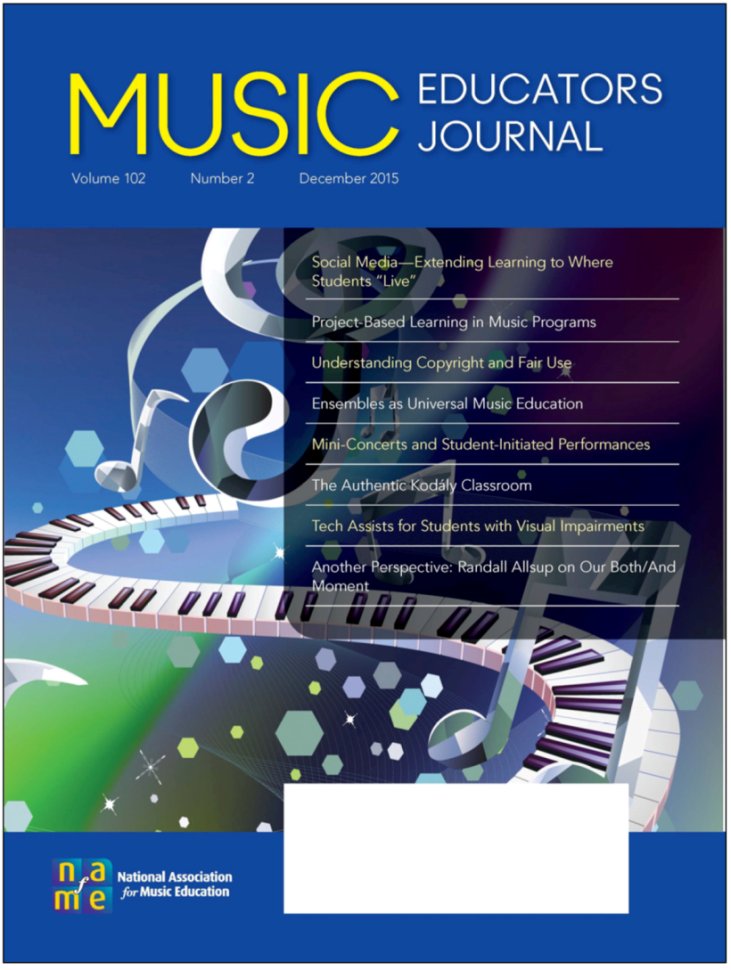
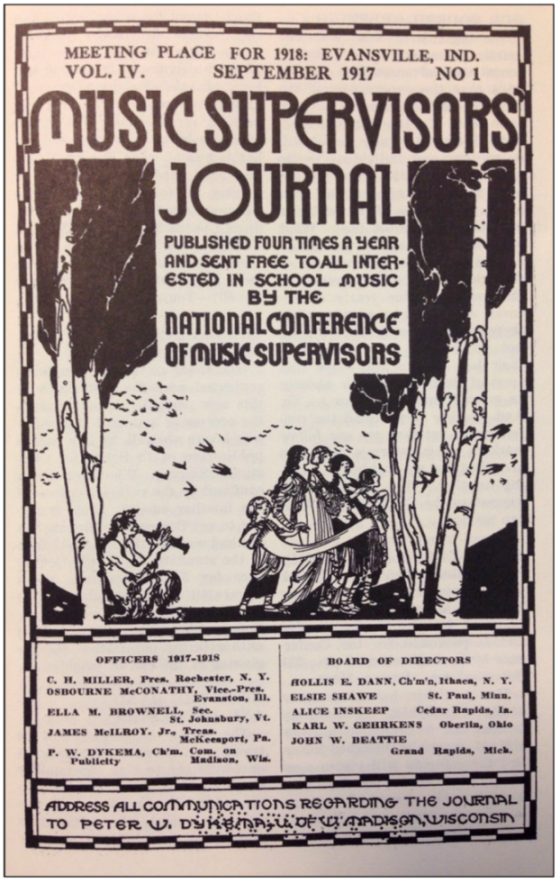
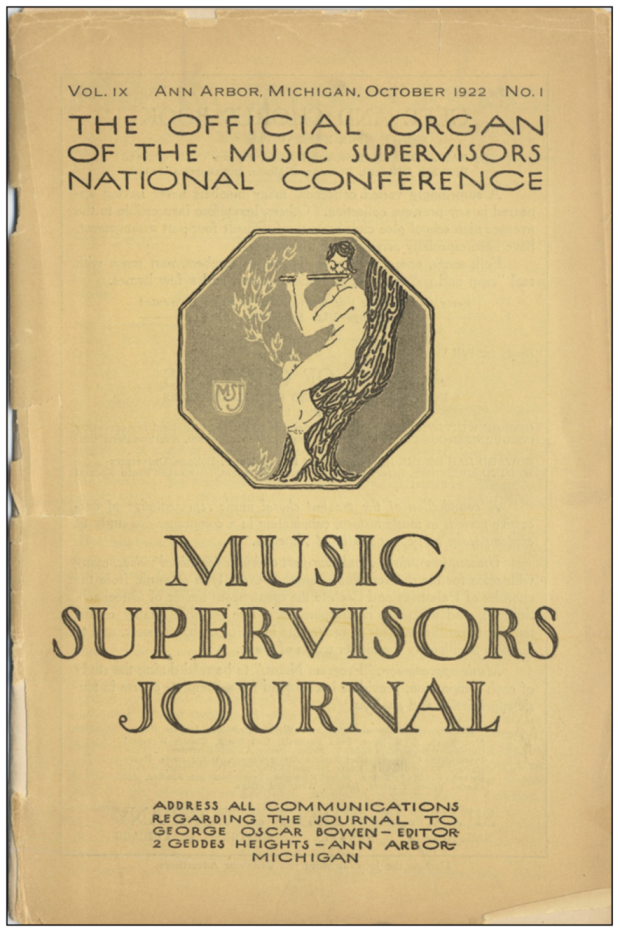
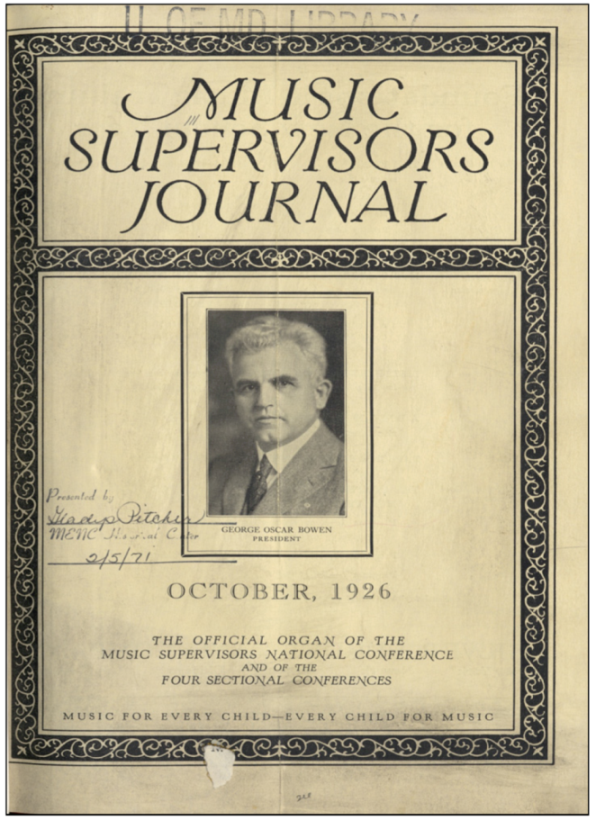
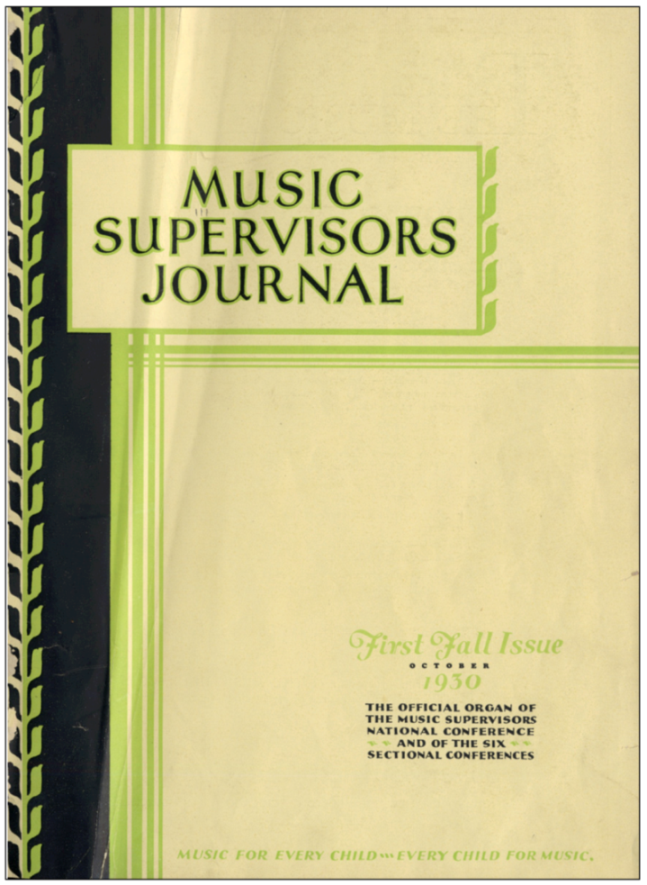
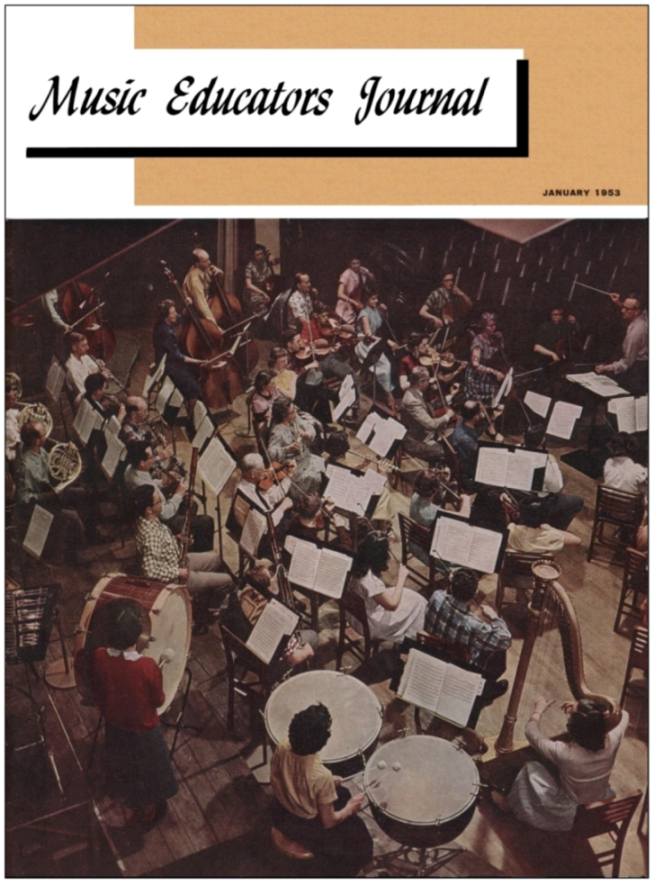
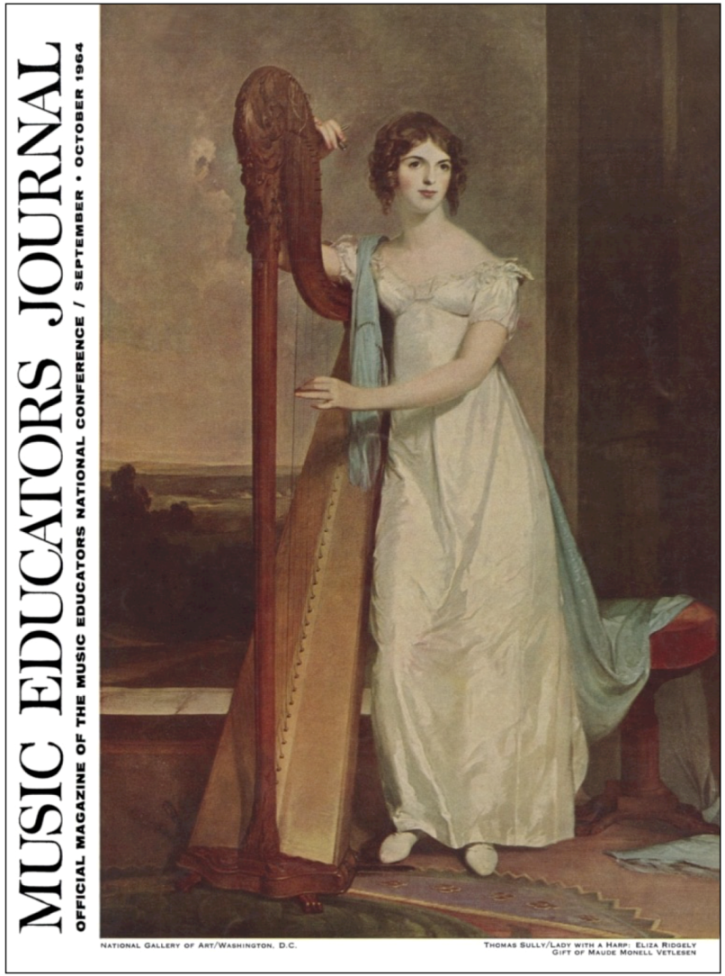
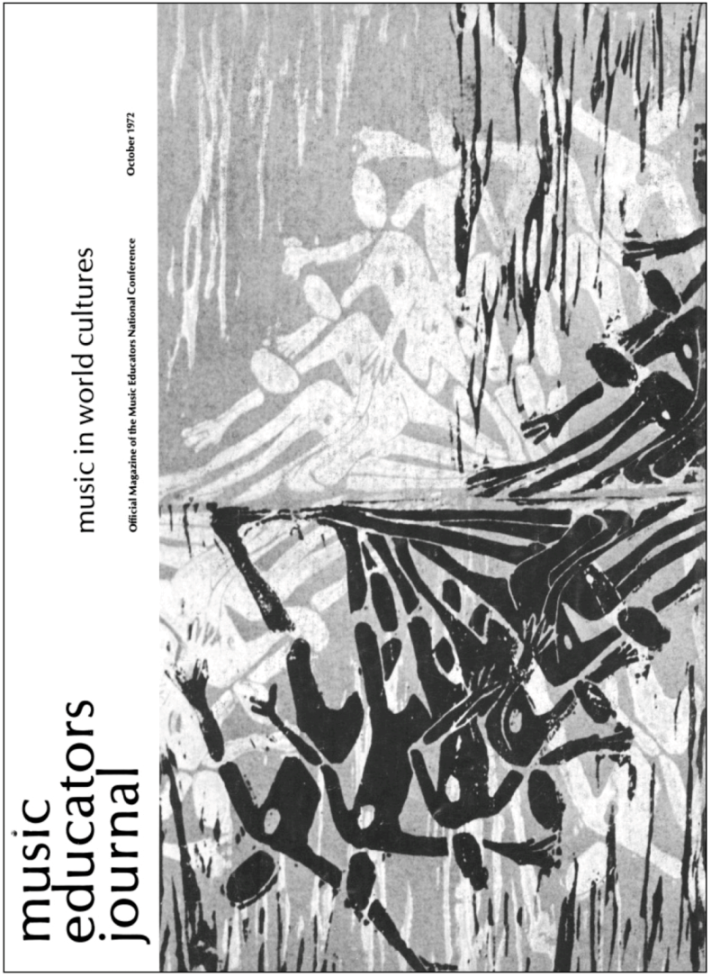
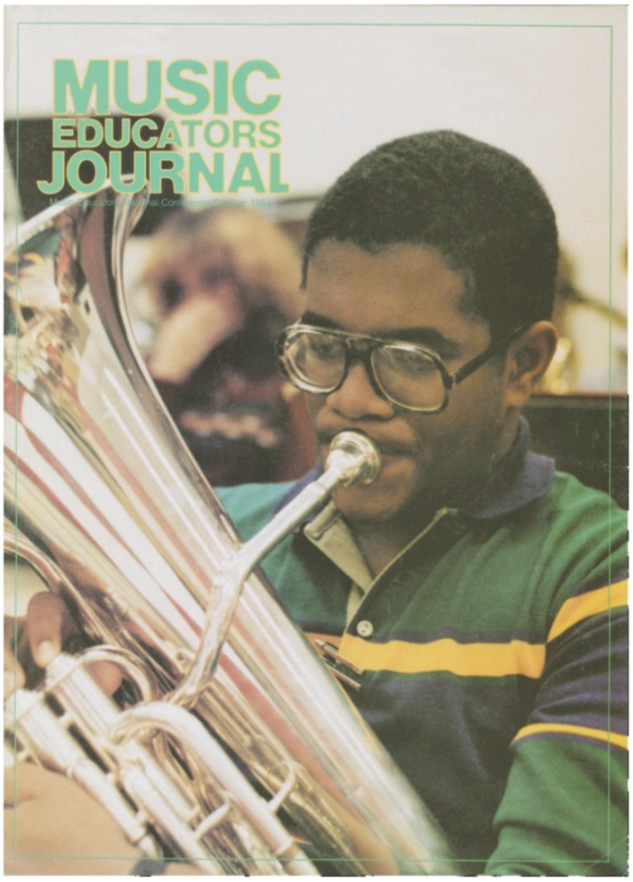
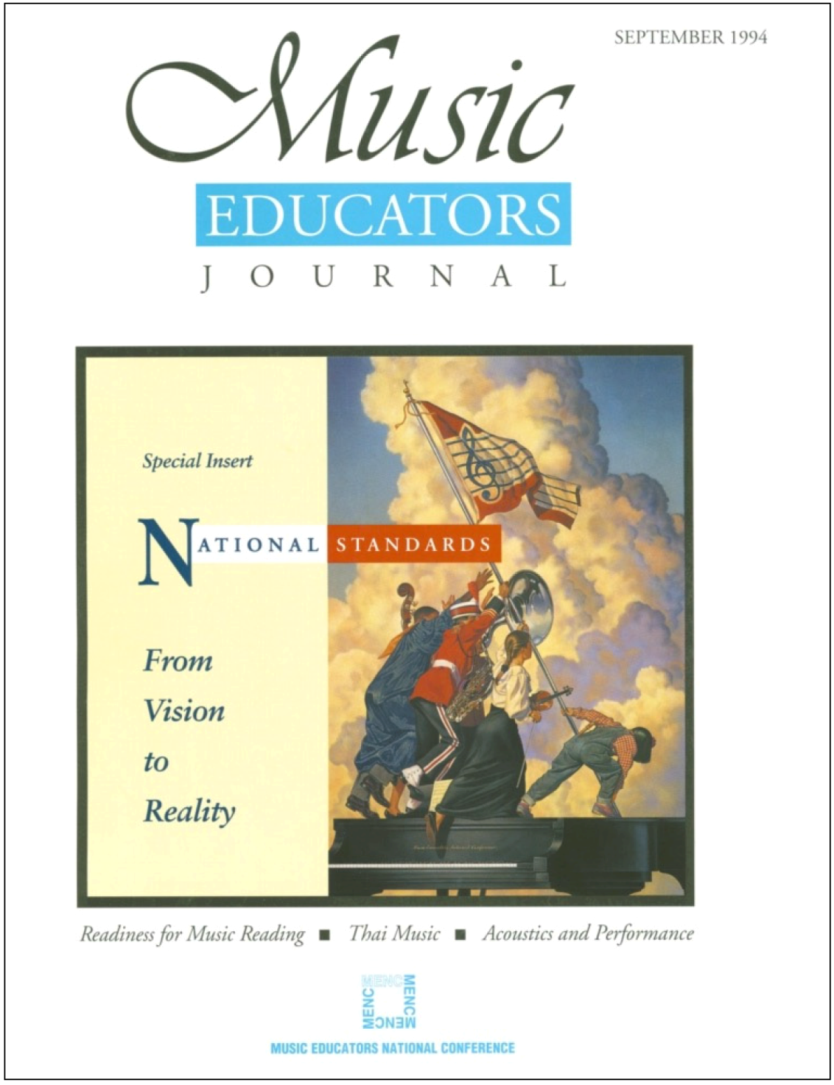
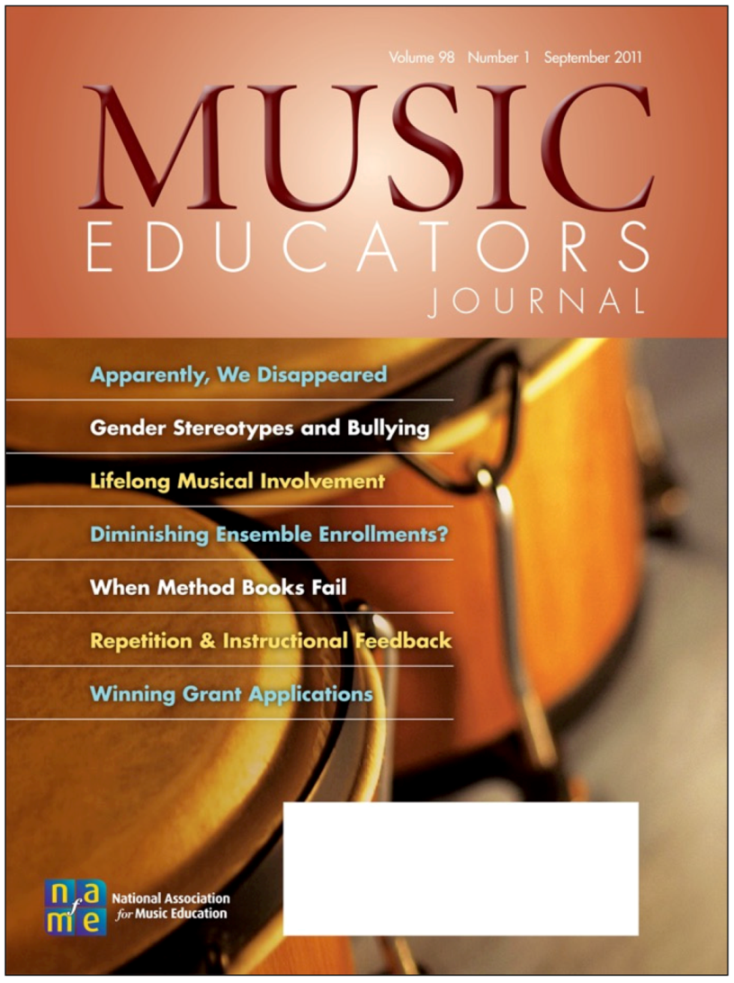
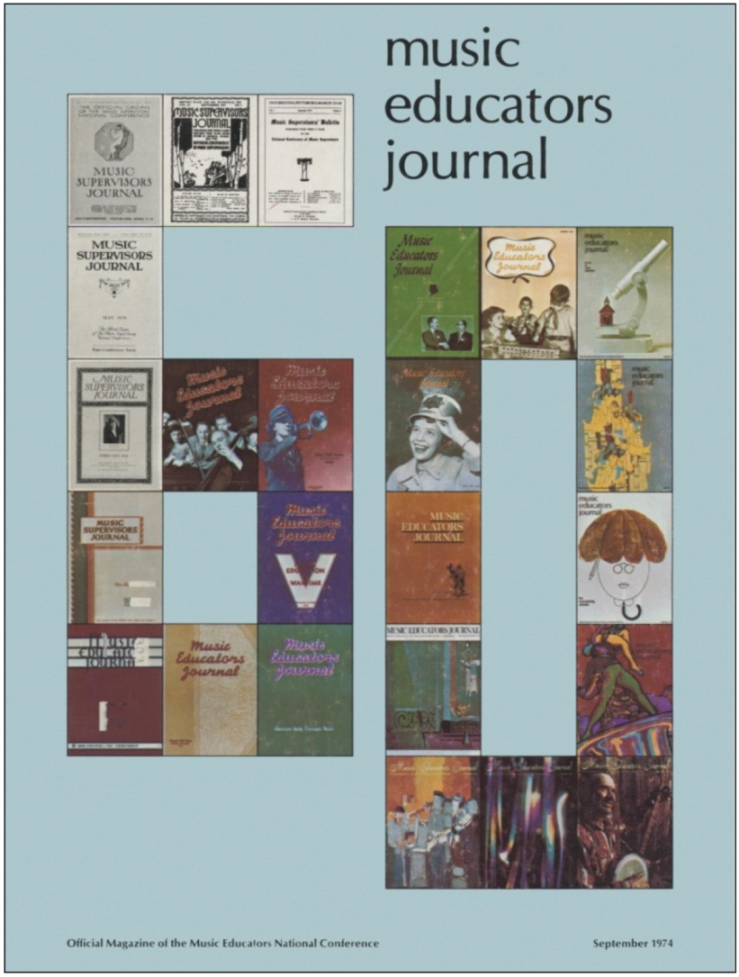
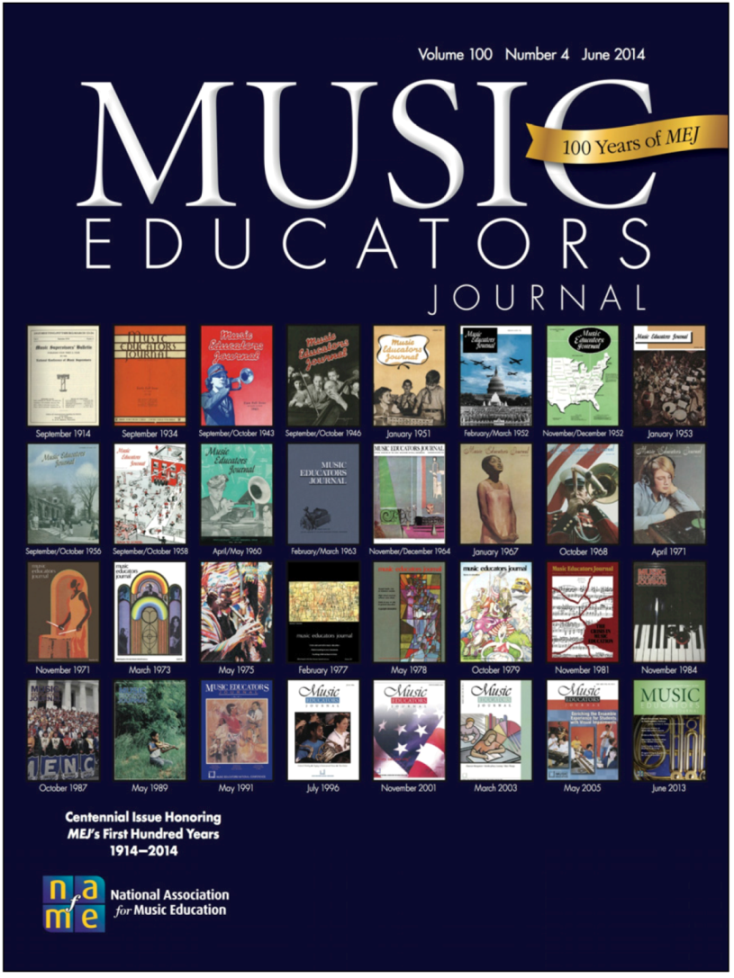
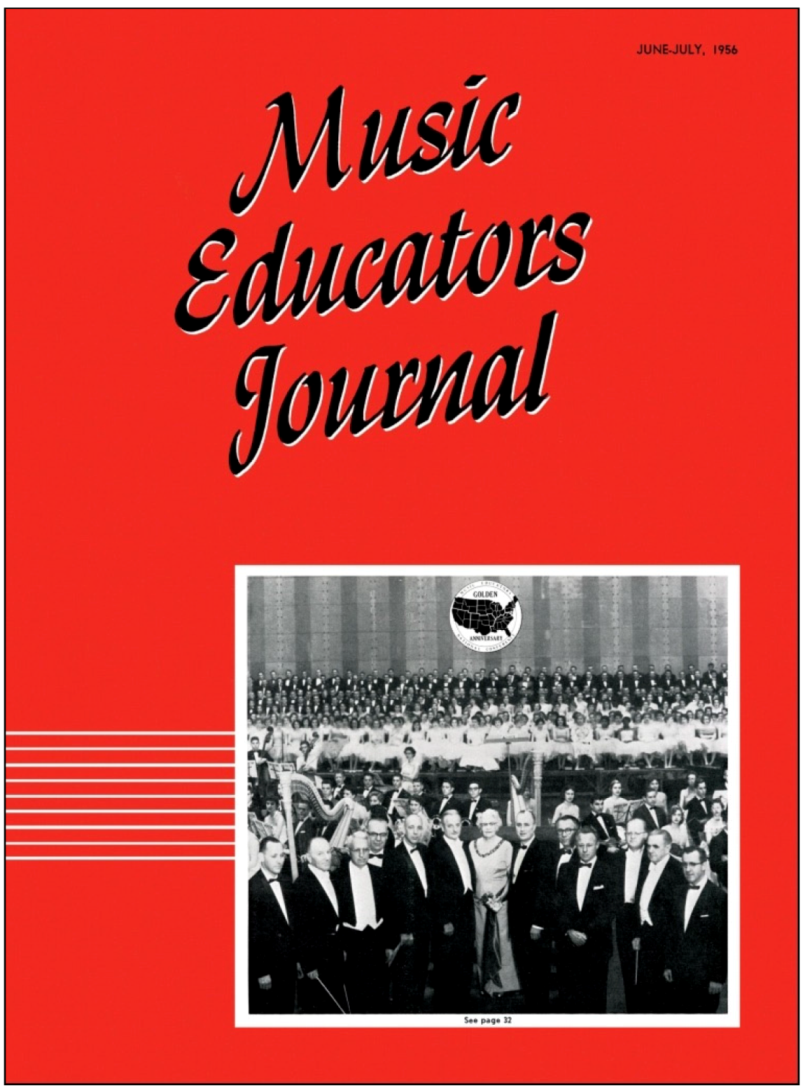
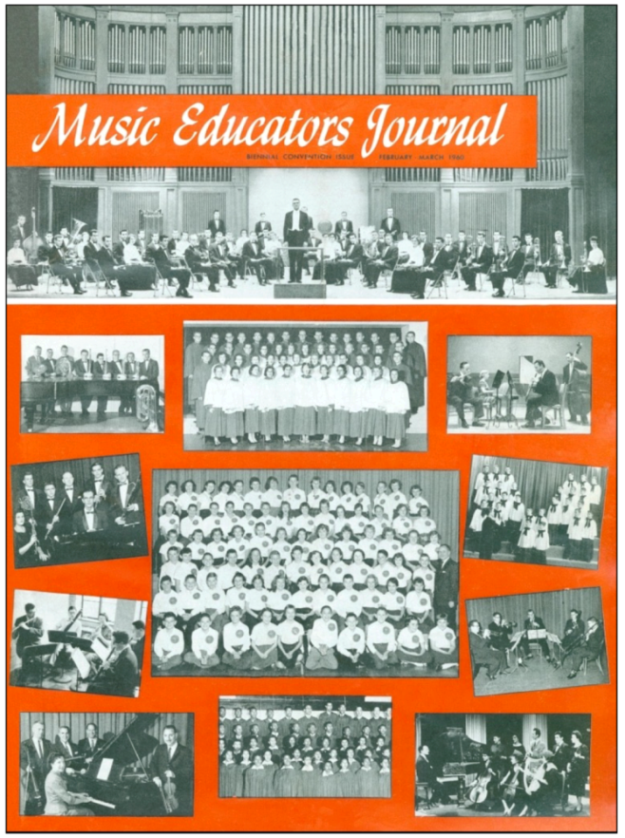
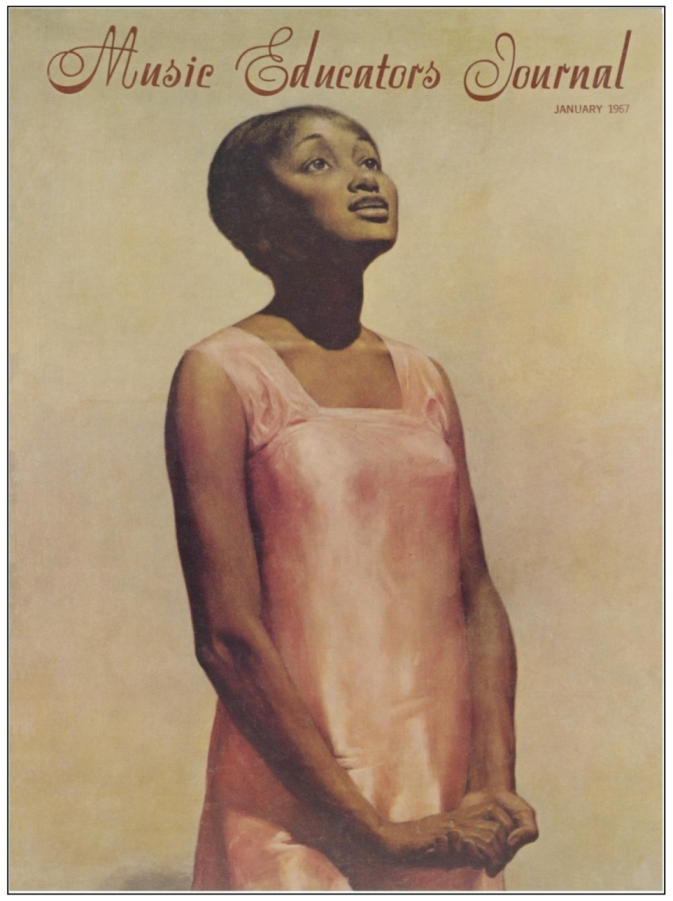
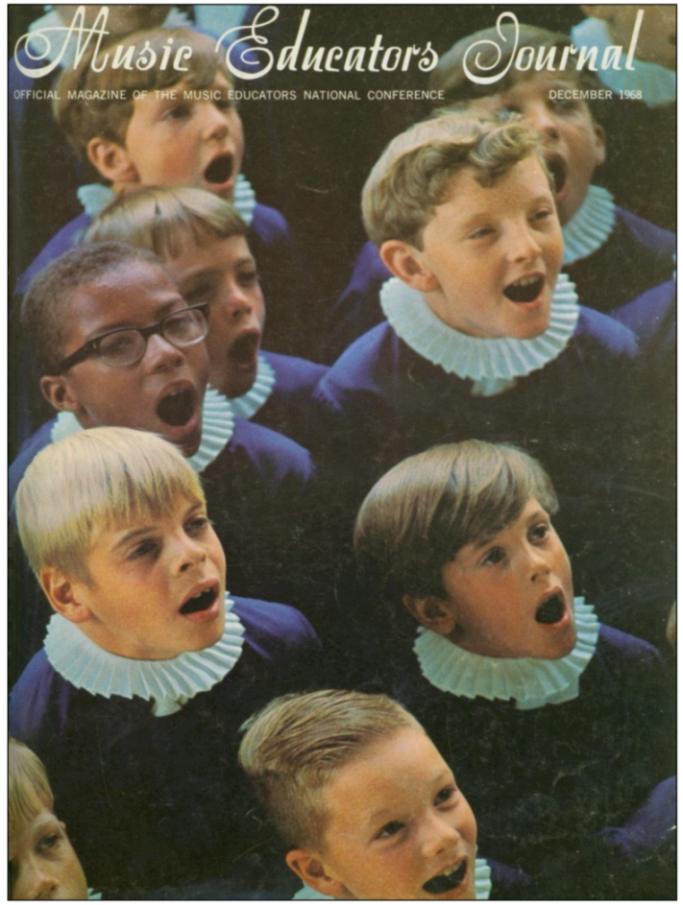
| Inferred Race/Ethnicity | # of Covers | % |
|---|---|---|
| Caucasian/White | 98 | 48.5 |
| Mixed Group | 62 | 30.7 |
| Black | 26 | 12.9 |
| Asian | 7 | 3.5 |
| Hispanic/Latino | 5 | 2.5 |
| Native American | 2 | 1.0 |
| Middle Eastern | 1 | 0.5 |
| Unclear | 1 | 0.5 |
© 2017 by the author. Licensee MDPI, Basel, Switzerland. This article is an open access article distributed under the terms and conditions of the Creative Commons Attribution (CC BY) license (http://creativecommons.org/licenses/by/4.0/).
Share and Cite
Freer, P.K. A Cover Story: Music Educators Journal and Historical-Political Narrativity. Publications 2017, 5, 13. https://doi.org/10.3390/publications5020013
Freer PK. A Cover Story: Music Educators Journal and Historical-Political Narrativity. Publications. 2017; 5(2):13. https://doi.org/10.3390/publications5020013
Chicago/Turabian StyleFreer, Patrick K. 2017. "A Cover Story: Music Educators Journal and Historical-Political Narrativity" Publications 5, no. 2: 13. https://doi.org/10.3390/publications5020013
APA StyleFreer, P. K. (2017). A Cover Story: Music Educators Journal and Historical-Political Narrativity. Publications, 5(2), 13. https://doi.org/10.3390/publications5020013





